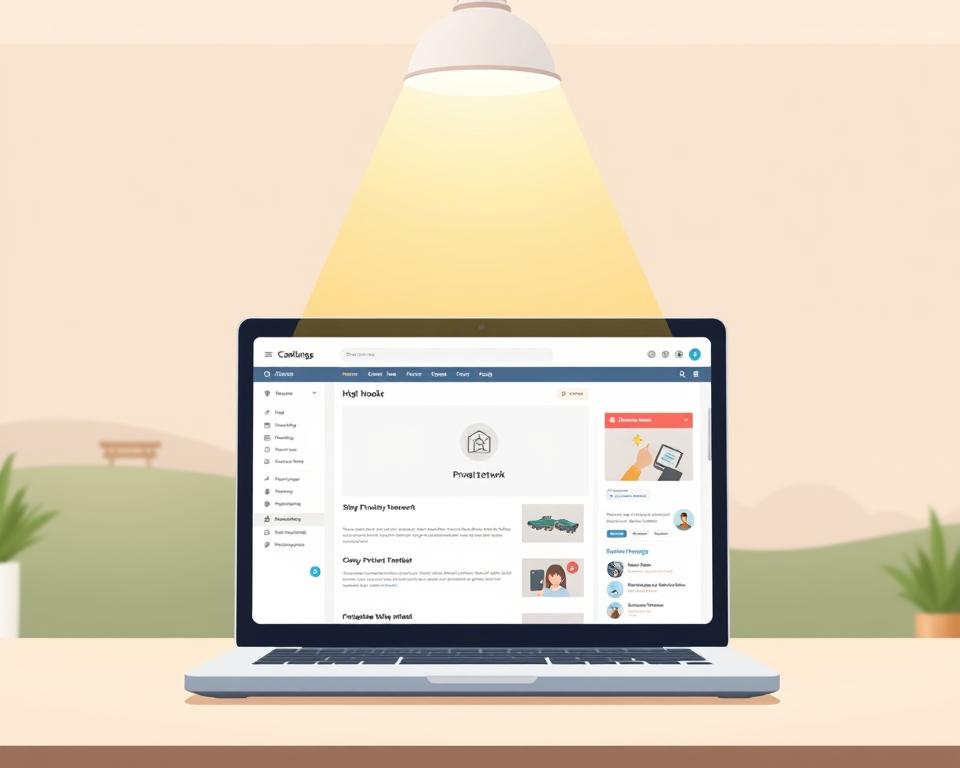Understanding Private Blog Network Links
Did you know nearly 60% of SEO professionals have used private blog network links? The appeal of a Private Blog Network (PBN) is its power to boost a website’s authority. That often translates into higher SERP positions. Yet, what truly defines a Private Blog Network in the SEO world? It might seem like a quick way to climb the ranks, yet using PBN SEO services poses significant risks. You risk incurring serious sanctions from Google. Let’s dive into the fundamentals of PBN private blog network and why they’re so captivating to many in the SEO field.
What is a Private Blog Network (PBN)?
Essentially, a PBN is a cluster of blogs designed to funnel link juice to a primary domain. Its goal is to boost rankings by channeling link authority from the network to your main site. Often these networks rely on expired domains that still hold some mojo, crafting a veneer of legitimacy.
The purpose of a PBN is clear. Site owners use them to improve their online presence. They achieve this through:
- Acquiring targeted backlinks to lift rankings.
- Dictating anchor text and placement for optimal relevance.
- Fostering a web of sites that exchange links in a natural-looking manner.

How do Private Blog Network Links Work?
PBN links work by creating private blog network backlinks that mimic natural links. Each PBN link is engineered to deceive crawlers into thinking it’s a genuine vote of confidence.
The process involves carefully chosen keywords and domains within a network of blogs. While this method can quickly improve rankings, it poses significant risks.
Backlinks should be cloaked within credible, value-driven articles to avoid detection.
PBN Benefits
A private blog network (PBN) offers numerous advantages for SEOs looking to enhance their backlink profiles. One of the primary benefits is the immediate control over backlinks.
PBN expired domains, often rich in authority, provide a unique opportunity to create strong backlinks.
Further, the flexibility found in PBNs allows for precise targeting of keyword-rich anchor texts.
PBN Pitfalls
Yet, these tactics are fraught with peril. A major concern is the risk of Google penalizing websites that use these networks.
Why Some SEOs Choose PBNs over Traditional Link Building
Guest posting and manual outreach take time and resources. They promise speed and predictability in link acquisition.
How to Run a PBN Safely
Effective pbn management demands careful attention and adherence to best practices. Vet domains meticulously to avoid bad neighborhoods.
Identifying PBN Links on Your Website
Spotting PBN links on your site is key to keeping your domain reputation healthy.
| Indicators of PBN Links | Description |
|---|---|
| Low-Quality Domains | Links from domains with poor authority or less than optimal rankings. |
| Irrelevant Content | Links embedded in content that does not match your site’s niche. |
| Suspicious Anchor Text | Repetitive or irrelevant anchor text patterns. |
| Thematic Similarity | Lack of a coherent theme among linking pages and domains. |
How to Disavow Private Blog Network Links
- Identify harmful PBN backlinks through thorough analysis.
- Create a disavow file correctly, listing specific URLs or domains to disavow.
- Upload the disavow file to Google Search Console.
Ethical Link Building Alternatives
Consider guest posting for genuine backlinks.
Clearing Up PBN Myths
Private Blog Networks (PBNs) are often misunderstood, affecting both new and seasoned SEOs.
Future of Private Blog Networks in SEO
| Factor | PBNs | Future SEO Practices |
|---|---|---|
| Content Quality | Low emphasis on genuine content | High emphasis on high-quality, valuable content |
| Risk Factor | High risk of penalties | Lower risk with authentic practices |
| User Engagement | Limited engagement | Enhanced user interaction and loyalty |
| Sustainability | Unsustainable in the long term | Focus on sustainable growth |
Final Thoughts
However, the pitfalls and penalties often outweigh the benefits.
